Nature Photography by Richard L. Bowman
Flowers & Plants Blog
Flowers & Plants Blog
Remember that Gerbera Daisy that Wikipedia calls a "tender perennial," after being deadheaded, it now has four blooms!
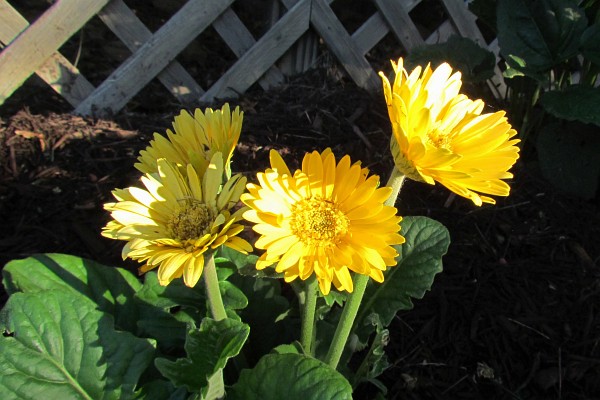
Gerbera Daisy, Harrisonburg, VA, USA (31-May-13; © Richard L. Bowman)
The play of the early-morning Sun on it today has added to its appeal for me.
And our Climbing Rose ("Blaze") will not be left behind. The first photo was last evening when the bush was in the late evening shade. The second one is from this morning when the early-morning Sun also plays on the blooms.
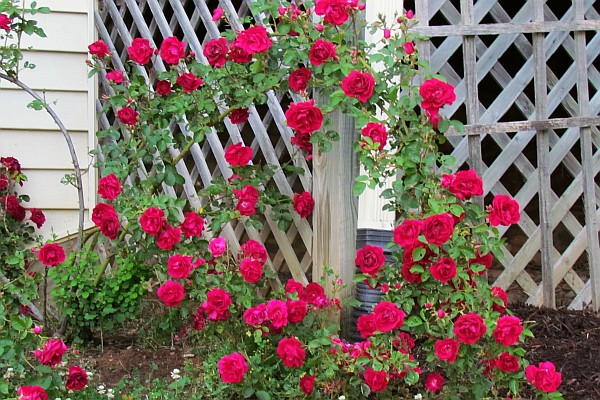
Blaze Climbing Rose bush, Harrisonburg, VA, USA (31-May-13; © Richard L. Bowman)
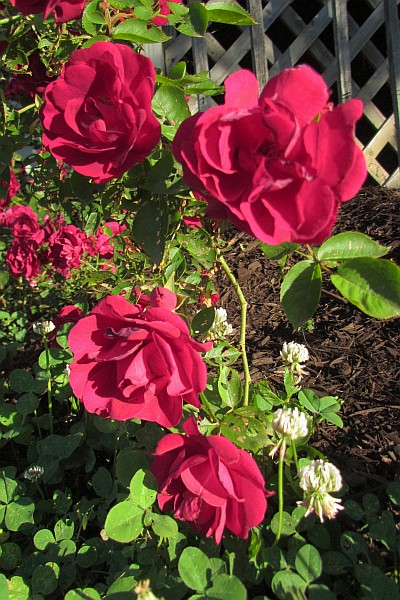
Blaze Climbing Rose blooms, Harrisonburg, VA, USA (31-May-13; © Richard L. Bowman)
So the summer blooms have started. Now if only we can get the garden vegetables planted and see their blossoms!
It has been a month since I last updated this Flowers and Plants Blog. Sorry about that. Life was very good but just a bit full during that time as we travelled to Florida (for two conferences) and to Pennsylvania to be with our children and their families.
In reverse chronological order, the first is a Gerbera Daisy that came up in our flower bed for the second summer in a row. While Wikipedia calls it a "tender perennial," this plant is the first one we have had that has come up its second season.
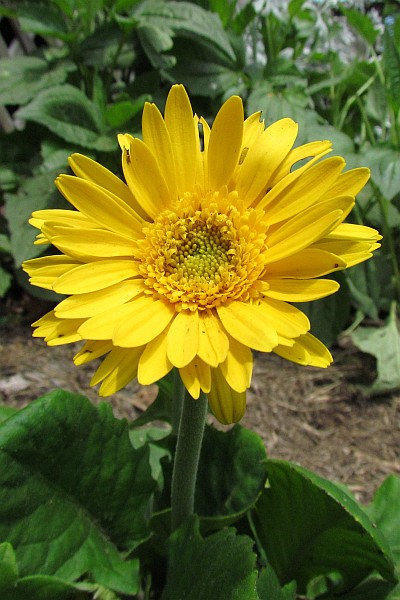
Gerbera Daisy, Harrisonburg, VA, USA (20-May-13; © Richard L. Bowman)
Another plant whose blooms grace our front year (even if the plant itself is rather straggly) is a Climbing Rose ("Blaze"). We do need to do a bit of pruning to make it more productive and to shape it. Prune it mainly in the spring.
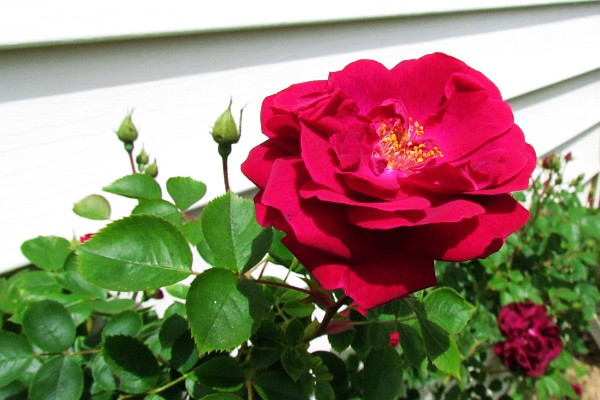
Blaze Climbing Rose, Harrisonburg, VA, USA (20-May-13; © Richard L. Bowman)
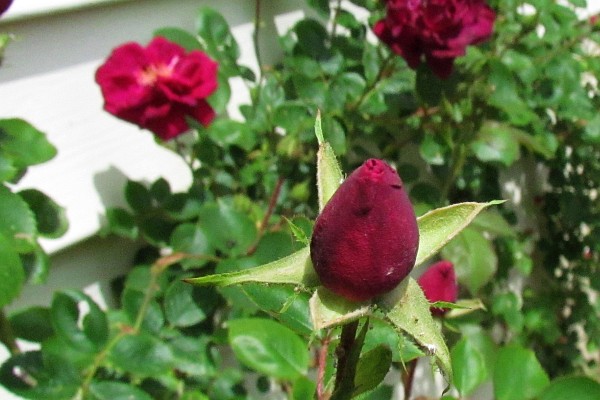
Blaze Climbing Rose bud, Harrisonburg, VA, USA (20-May-13; © Richard L. Bowman)
Another flower that makes a nice show in late spring is the Dianthus. (Check out my Animal Blog for May 21 to see photos of an ant eating the nectar of one of these blooms.)
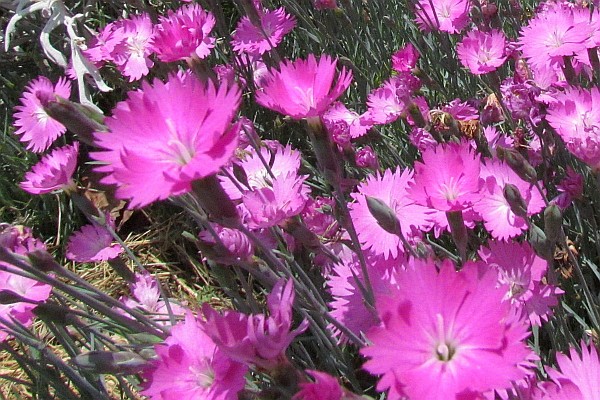
Dianthus, Harrisonburg, VA, USA (17-May-13; © Richard L. Bowman)
While I may grumble about it at times, I secretly like the Virginia Creeper that grows on the side of our shed and over the brush pile I keep nearby.
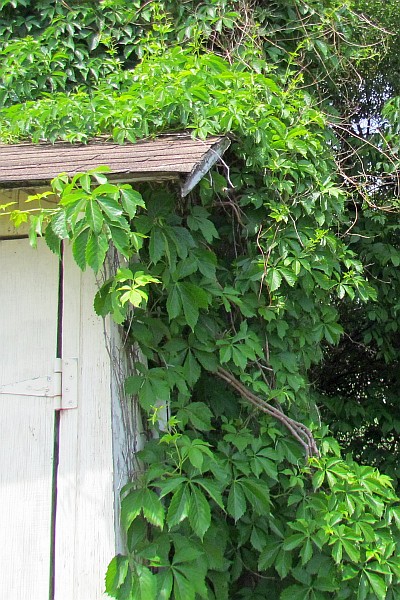
Virginia Creeper, Harrisonburg, VA, USA (17-May-13; © Richard L. Bowman)
In my push to learn more about and to appreciate our multi-species lawn, here is a photo of a small blue flower called Ground Ivy or Creeping Charlie. Isn't it lovely. OK, it is considered a weed if you want only grasses in your lawn, and various sources report that is is difficult to get rid of.
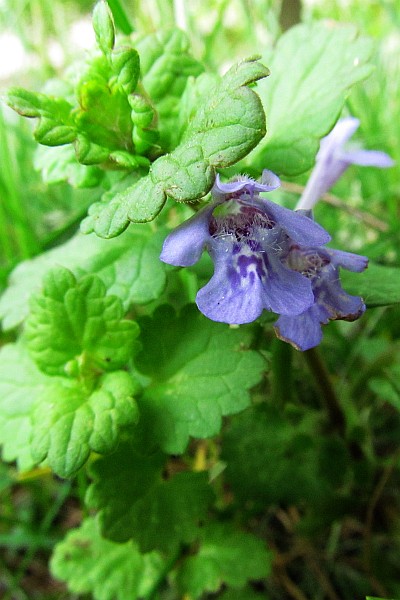
Ground Ivy (or Creeping Charlie), Harrisonburg, VA, USA (16-May-13; © Richard L. Bowman)
I wanted to see if a night time photo with flash would work well to highlight only the blossoms of our Lilac bush. It is not bad, but I don't know that I like it as well as the daytime shot pictured several photos below this one.
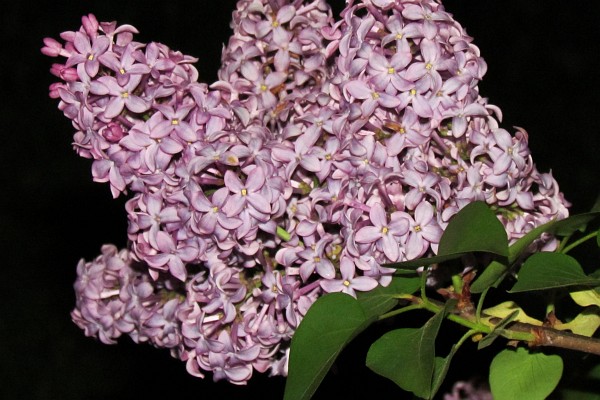
Lilac blooms, Harrisonburg, VA, USA (30-Apr-13; © Richard L. Bowman)
Here is one to add to my growing "I did not know that" list. Maple trees actually produce flowers. Even as a kid, I knew they produced seeds, since we called them "helicopters" and stuck them to our noses after splitting the green see apart. The blossoms small with a very camouflaged yellow-green color.
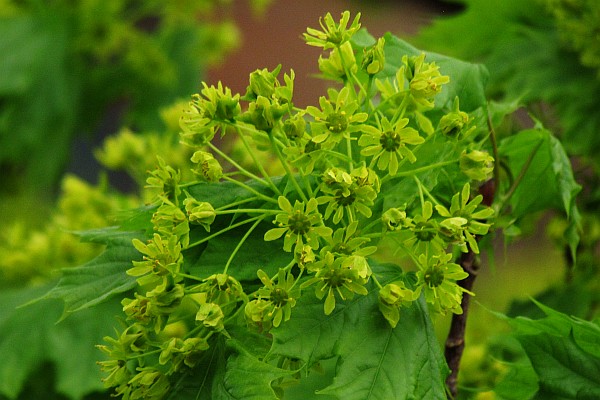
Norway Maple blossoms, Harrisonburg, VA, USA (18-Apr-13; © Richard L. Bowman)
Another weed in our lawn amid White Clover is Stork's Bill (thanks for the identification goes to Dr. Ed Lickey). I am fairly sure it is the Redstem variety and not the Common one, but I could be wrong. The flowers are small, on the order of a half-inch (1.3 cm) in diameter. Dr. Ed Lickey says they are in the geranium family and the fruit is large (up to 1.5 inches, or almost 4 cm).
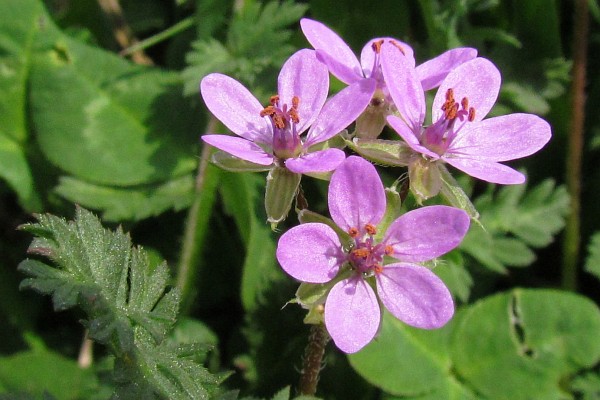
Stork's Bill flowers, Harrisonburg, VA, USA (17-Apr-13; © Richard L. Bowman)
Another find from up-close-and-personal photos is that mature Dandelion flowers have tall spikes made by the stigma growing up through the anthers (tubes with pollen on the outside). Each "flower" is actually composed of a large number of florets--one per petal. These spikes later form the dried seed with "wings" which enable the seed to disperse easily in the wind. (For more info, check out this site.)
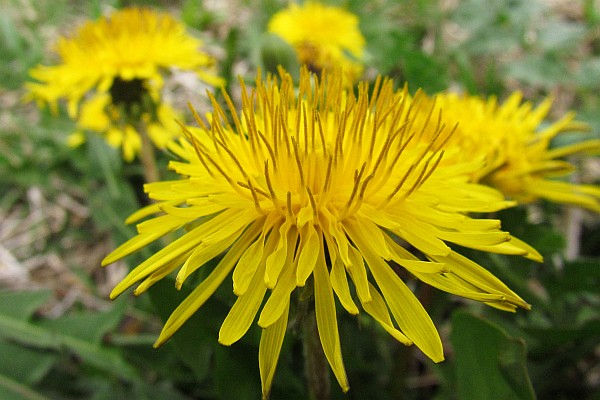
Dandelion flower with stigmas at the end of the spickes, Harrisonburg, VA, USA (18-Apr-13; © Richard L. Bowman)
Our fruit trees also provide nice spring blooms.
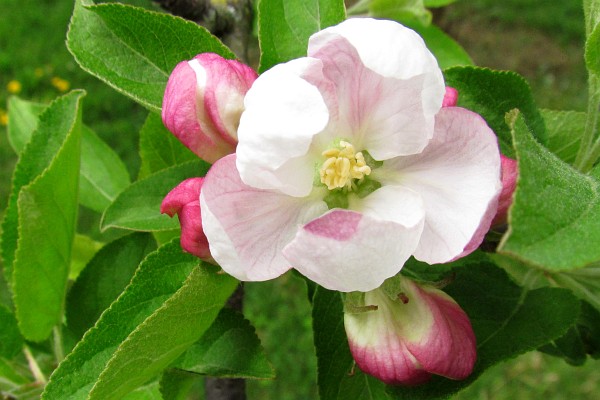
Apple tree blossom, Harrisonburg, VA, USA (18-Apr-13; © Richard L. Bowman)
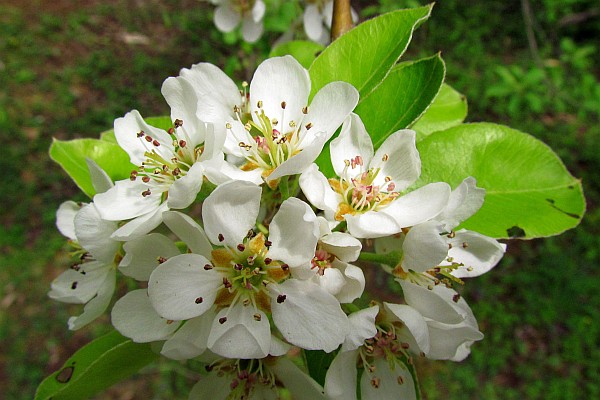
Pear tree blossoms, Harrisonburg, VA, USA (18-Apr-13; © Richard L. Bowman)
Lilac blossoms are a common sign of spring in our area of the United States (the Shenandoah Valley of Virginia).
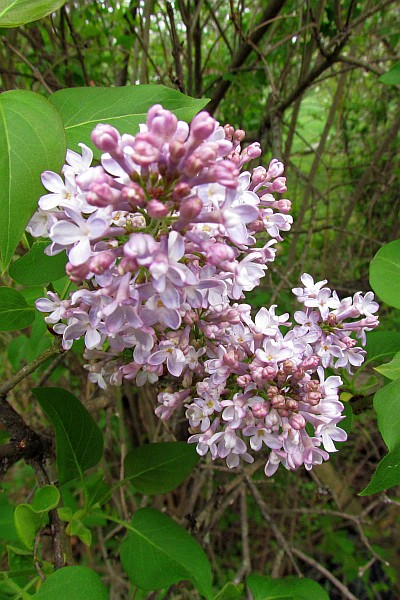
Lilac blooms, Harrisonburg, VA, USA (18-Apr-13; © Richard L. Bowman)
The Rapeseed plant whose flowers I photographed on April 17 and posted April 21 (see the archive) are part of the turnip family. The large tap root gives one that sense. Below is the one I dug up. It was about 10 inches (25 cm) long, and that is with a broken off this root at the very bottom.
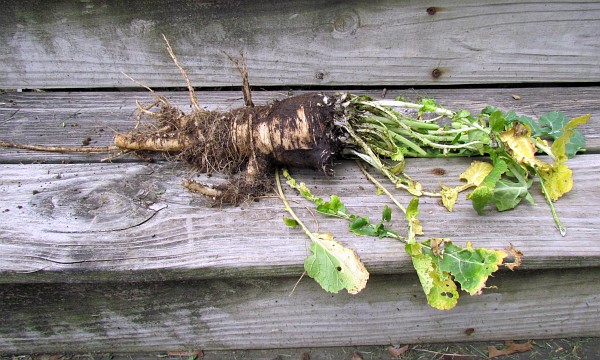
Rapeseed plant growing in our flower bed (unwanted?), Harrisonburg, VA, USA (18-Apr-13; © Richard L. Bowman)
Get out there and observe the small and large in your own plant world!
--©2013, Richard L. Bowman